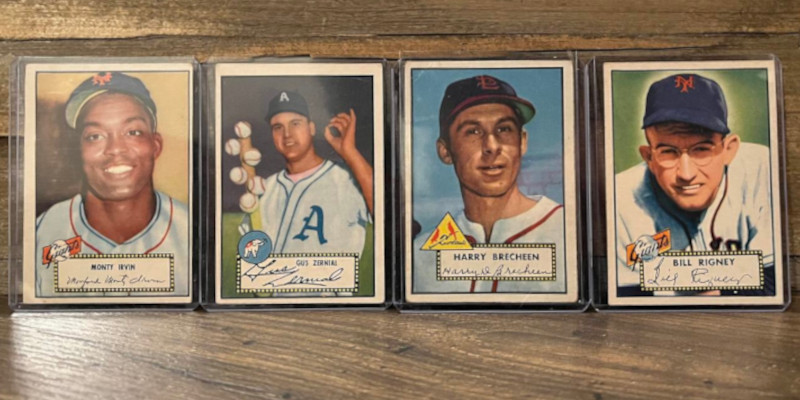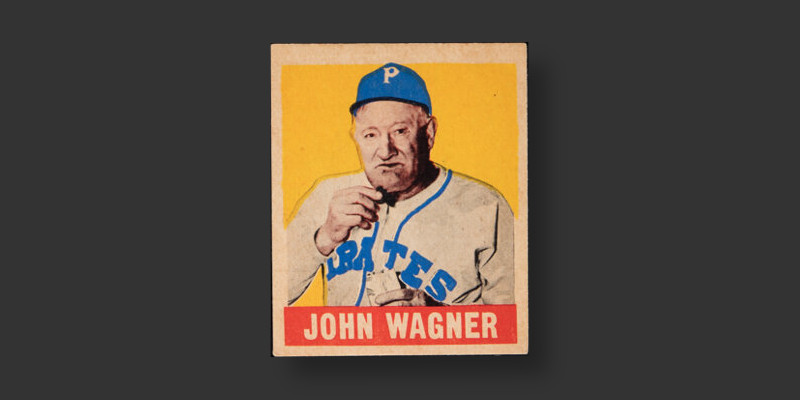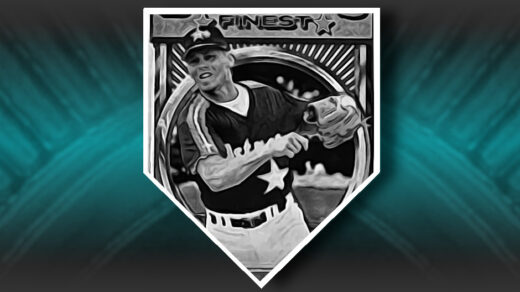What a busy end to the year! Work was extremely demanding in September/October, involving deployment of new tech systems and the transitioning of several multi-decade relationships with major vendors to new providers. Of course stuff broke, but we took things head on and are pretty much up and running at even faster speeds than before. Oh, during this time I built a deck. By myself. In the December darkness after work.
This didn’t leave a lot of time for other pursuits, though I did get a chance to read Steve Rushin’s The 34-Ton Bat. From the outside the book looks like any other ordinary anthology of baseball facts, which is about all it claims to be. Once opened, one realizes just how well the author writes. There is much more skill present in this book than most other sports books out there. I came away seriously impressed and easily place it atop my ranking of best baseball book read this year.
Baseball’s offseason is once again proving fun. The Texas Rangers won some exhibition baseball over the Diamondbacks. Shohei Ohtani (and others) signed big contracts with the Dodgers. Juan Soto was traded to the Yankees. The Athletics confirmed their move to Las Vegas, and I am somehow the only one who appears happy about this.
Additions to the Collection
Every three months I look at what has been added to the collection. I am still focused on building a handful of sets.
1952 Topps: A dozen new cards were checked off the needs list from this set, as well as sorely needed upgrades of a few filler-grade cards. I am particularly excited with significant condition upgrades for my Monte Irvin and Gus Zernial cards. Harry Brecheen’s semi-high number card is the most notable of the new additions, though I was even happier when a plain white envelope arrived bearing a card of future Angels’ skipper Bill Rigney. The Rigney card was the final name to check off the second series of ’52 Topps. I did it! I actually completed a series from this set!

1949 Leaf: Five ’49 Leaf singles joined the collection. I am excited to add a card of Lou Brissie, as the existence of this card touched off a lawsuit that all but killed Leaf’s baseball card production aspirations and may have generated the shortage of second series cards that makes the set so challenging to complete. I added a Cass Michaels card, notable as one of the short prints. A Jim Hegan card was picked up, a card known for the great catching pose it possesses in comparison to the boring headshots so prominent in cards of the era. Another addition is a Johnny Mize card, one of the most impressive hitters from a sabermetric standpoint and one of my favorite guys of the period.

Oh yeah, I almost forgot: I now have a Honus Wagner card. 😁

No new additions were made to the set building projects of 1993 Finest Refractors, 1991 Donruss Elite, or 2018 Archives Sandlot Autographs. It has now been a full year since I added to the latter two sets and I suspect it may be another before I come across attractive additions to either.
Other cards: I upgraded my 1952 Parkhurst Frostade card of Charlie Bishop, an obscure Athletics pitcher that I have been collecting. I don’t see many of these Canadian minor league cards here in Virginia and managed to snag one in better shape than my Very Good copy. My interest was piqued when a seller began to break up what looked like an entire set of 1955 Rodeo Meats cards, a rare regional issue that contains Bishop’s most difficult card. Unfortunately, this turned out to be a set building project that was being abandoned partly out of the difficulty of locating some of the names like Bishop. I also have been haphazardly picking up cards of slightly better known Athletics outfielder Jose Canseco. This quarter I nabbed 15 new cards on my own, including most of his 1990s Topps Finest Refractor run. Another collector provided a package at the end of December that included some food issues and a box originally marketed in 1989 as a “Jose Canseco Baseball Card Kit.” It includes a vinyl record (!) and and a binder with 20 cards produced solely for the kit.

In addition to these arrivals, I also received my annual shipment of purchases from COMC. I can finally photograph and write up a couple dozen cards that were picked up earlier in the year. Also included in the box were items set aside as gifts of appreciation for some people whose work I enjoy reading on a regular basis. Cards will be assembled in some special packaging and mailed out in the next few weeks. Please respond if I have messaged you for an address.
Quitting eBay
I’m done with eBay, at least for a while. I’ll come back if the platform improves but am not holding my breath. I’m not happy about this, but don’t see a better course of action after a series of increasingly negative experiences. So what constitutes the chain of events that have led me to the brink of nuking my 25 year old, 100% feedback account?
Early in the year I purchased a Greg Maddux card that was required to pass through eBay’s Authenticity Guarantee program. It did so, despite being an obviously misidentified card when viewed in person. I previously wrote about my efforts to get a refund. While I was successful in reversing eBay’s guarantee and getting PSA to acknowledge a card had been mischaracterized, it left some doubts about how well I would have fared if I had been reliant on the program to assure that a purchase was indeed what was claimed.
I later purchased another card from a collector across the country in California. The seller duly provided tracking information and sent the card on its way. The card bounced around a bit in California and, for reasons that are still not clear, was redelivered back to the sender’s address. I asked the seller about this and was met with a series of messages claiming the card was delivered to me. I contacted eBay about the problem and was refunded after a visit to my local post office, a lost mail search, and phone calls to the seller’s local post office.
Shortly after that I located one of the two remaining cards needed for my ’93 refractor set project and immediately hit the buy-it-now button. The seller is a well known collector of ticket stubs who gets interviewed in a decent number of hobby media outlets. He messaged me right after the purchase was made to say the card would soon be on its way. An hour later the transaction was canceled, accompanied by a bizarre tale of the card somehow being dropped and its PSA slab being damaged. Days later the seller relisted the obviously undamaged slab (same serial number) at more than twice the previously agreed price and sent me a message advertising his Instagram channel.
A transaction with a different seller was successfully carried out in October. While I like having the cards that were purchased, I wish I hadn’t done any business with this seemingly deranged individual (Messages received during the transaction were not exactly confidence inspiring). This Georgia-based seller is a tax cheat, also known as a thief – I pay all my taxes, those that lie about doing so are indirectly stealing from me. Along with my cards were pamphlets advertising websites extolling his belief that taxes are illegal and that he is not subject to them. Sigh. I’ve had first hand experience with a handful of the loonies that really believe this garbage. One of my uncles ended up killing himself after the IRS demolished his defense after he straight up committed tax fraud. His arguments in favor of skipping out on what he owes are pretty much a list of things the IRS specifically mentions in their write-up on frivolous tax arguments.
In addition to these specific interactions, eBay listings seem to be filling with more and more dubious listings. The company tried to address this at the beginning of the year when it required sellers utilize predefined card-specific descriptions. Instead of preventing bad listings from getting into search results, it polluted the stream with extraneous information that was not applicable. Buyers were able to report listings that violated these keyword spamming rules, but the review teams were apparently unfamiliar with cards and ineffective. Even obviously hacked accounts using stolen images had their items stay public for several days at a time.
The situation became much worse as eBay rolled out its artificial intelligence software. Product descriptions became useless, reading more like a fake Amazon review generated in a foreign sweatshop than anything actually helpful. This terrible system was deemed so effective that it took over the responsibility for reviewing reports of scam listings. This incomplete, unready for prime-time system only looks to see if the item title matches whatever was selected from the predefined drop-downs in the product description. I could take a picture of a potato, label it as a 1993 Topps Derek Jeter rookie, and the system would respond that there is nothing wrong with the listing if I select the appropriate descriptive terms for a baseball card.
eBay has always had a certain percentage of problematic listings and sellers, but it thrived because it did a good job of connecting a critical mass of buyers and sellers truly interested in working out a fair deal for all parties. Other platforms have historically had a much higher percentage of bad actors, driving more good transactions to eBay and improving the site’s impressive network effect. I get a sense that this is changing, and as more bad actors realize just how easy eBay’s newly implemented safeguards can be evaded it will get much, much worse.
I’m stepping away now, before this shift accelerates. The eBay app is gone from my phone. Notifications from my saved searches have been turned off. I’ll check back in a year or so, but I’m not holding my breath waiting for improvement.
A New Project!
So what does one do with all the time freed up by breaking up with eBay? During sanity breaks of the insane hours spent working on our projects at work I tried to relax by working on some old math problems I had tried to tackle years ago. Specifically I was attempting to calculate how many of each baseball card were produced from various sets. I updated my approach and knocked out some new estimates whenever I needed a break. I recently registered another domain name and plan to publish these estimates on a new site that will allow collectors to quickly gauge the relative production levels of cards they are interested in. While CardBoredom will still be my primary writing outlet I plan to build this out later in 2024.




